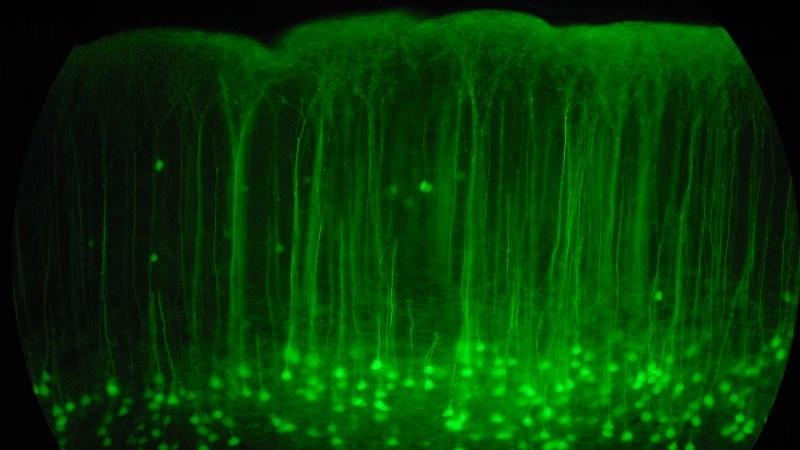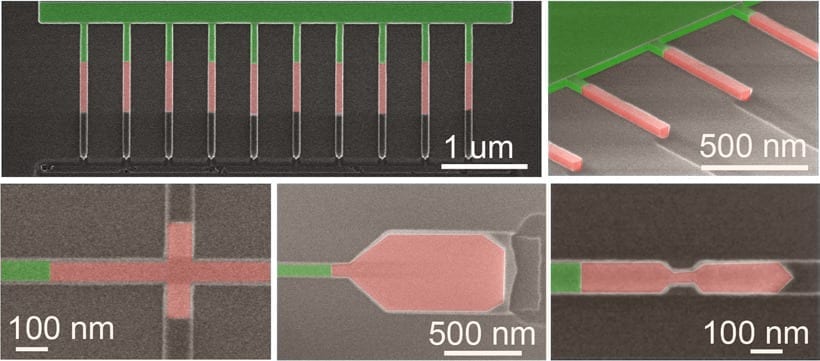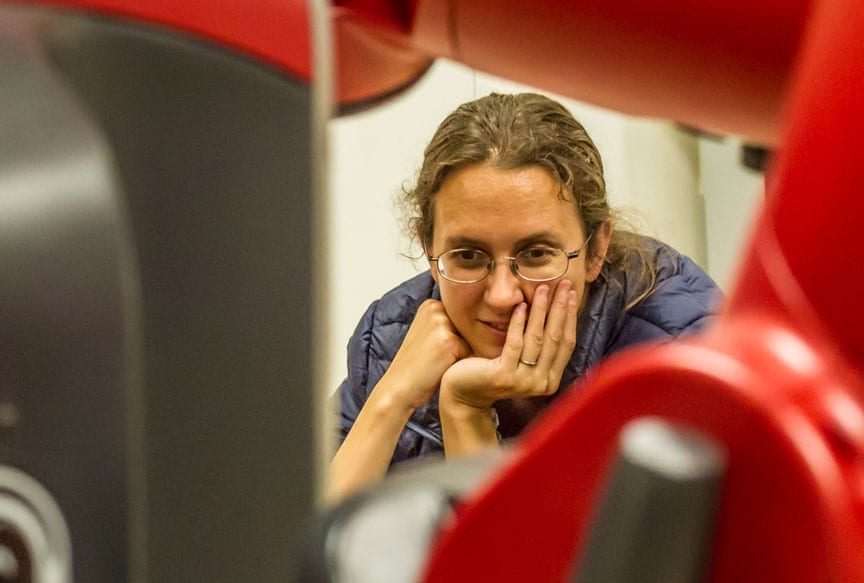
It’s a notion that might be pulled from the pages of science-fiction novel – electronic devices that can be injected directly into the brain, or other body parts, and treat everything from neurodegenerative disorders to paralysis.
It sounds unlikely, until you visit Charles Lieber’s lab.
A team of international researchers, led by Lieber, the Mark Hyman, Jr. Professor of Chemistry, an international team of researchers developed a method for fabricating nano-scale electronic scaffolds that can be injected via syringe. Once connected to electronic devices, the scaffolds can be used to monitor neural activity, stimulate tissues and even promote regenerations of neurons. The study is described in a June 8 paper in Nature Nanotechnology.
Contributing to the work were Jia Liu, Tian-Ming Fu, Zengguang Cheng, Guosong Hong, Tao Zhou, Lihua Jin, Madhavi Duvvuri, Zhe Jiang, Peter Kruskal, Chong Xie, Zhigang Suo, Ying Fang
“I do feel that this has the potential to be revolutionary,” Lieber said. “This opens up a completely new frontier where we can explore the interface between electronic structures and biology. For the past thirty years, people have made incremental improvements in micro-fabrication techniques that have allowed us to make rigid probes smaller and smaller, but no one has addressed this issue – the electronics/cellular interface – at the level at which biology works.”
The idea of merging the biological with the electronic is not a new one for Lieber.
In an earlier study, scientists in Lieber’s lab demonstrated that the scaffolds could be used to create “cyborg” tissue – when cardiac or nerve cells were grown with embedded scaffolds. Researchers were then able to use the devices to record electrical signals generated by the tissues, and to measure changes in those signals as they administered cardio- or neuro-stimulating drugs.
“We were able to demonstrate that we could make this scaffold and culture cells within it, but we didn’t really have an idea how to insert that into pre-existing tissue,” Lieber said. “But if you want to study the brain or develop the tools to explore the brain-machine interface, you need to stick something into the body. When releasing the electronics scaffold completely from the fabrication substrate, we noticed that it was almost invisible and very flexible like a polymer and could literally be sucked into a glass needle or pipette. From there, we simply asked, would it be possible to deliver the mesh electronics by syringe needle injection, a process common to delivery of many species in biology and medicine – you could go to the doctor and you inject this and you’re wired up.'”
Though not the first attempts at implanting electronics into the brain – deep brain stimulation has been used to treat a variety of disorders for decades – the nano-fabricated scaffolds operate on a completely different scale.
“Existing techniques are crude relative to the way the brain is wired,” Lieber explained. “Whether it’s a silicon probe or flexible polymers…they cause inflammation in the tissue that requires periodically changing the position or the stimulation. But with our injectable electronics, it’s as if it’s not there at all. They are one million times more flexible than any state-of-the-art flexible electronics and have subcellular feature sizes. They’re what I call “neuro-philic” – they actually like to interact with neurons..”
Despite their enormous potential, the fabrication of the injectable scaffolds is surprisingly easy.
“That’s the beauty of this – it’s compatible with conventional manufacturing techniques,” Lieber said.
Read more: Injectable electronics
The Latest on: Injectable electronics
[google_news title=”” keyword=”Injectable electronics” num_posts=”10″ blurb_length=”0″ show_thumb=”left”]
via Google News
The Latest on: Injectable electronics
- Cost cutting continues for Hillenbrand plastics unitson May 1, 2024 at 9:24 am
"We saw bright spots on demand for injection molding equipment, particularly for automotive and packaging applications, but weakness and consumer goods and electronics," said Bob VanHimbergen, senior ...
- Must Know Repairs for 1987-2006 Jeep "YJ" and "TJ" Wranglerson April 30, 2024 at 9:00 am
A Jeep is truly one of those phenomena in the automotive realm that transcends age, gender, and even financial bracket. Whether it’s going to the beach with the top off, exploring the great outdoors ...
- Etanercept Injection Site Reactionon April 28, 2024 at 5:00 pm
She started treatment with etanercept (Enbrel ®) 1 month previously. One day after a subcutaneous injection into the left thigh, she developed a mildly pruritic eruption on the right thigh ...
- Could you endure 40 jabs of 'injectable moisturiser' at a cost of £850 to smooth out wrinkly mummy tum?on April 27, 2024 at 2:10 pm
A 'transformative' injectable moisturiser which smooths wrinkles on the stomach, arms and bust is being offered at UK cosmetic clinics. The innovative procedure involves up to 40 jabs of diluted ...
- First cases of HIV transmission through cosmetic injection confirmed in CDC report on women who got ‘vampire facials’on April 25, 2024 at 5:00 pm
The CDC report noted the unprecedented nature of the findings, writing that “HIV transmitted through cosmetic injection services via contaminated blood has not been previously documented.” ...
- Research combines DNA origami and photolithography to move one step closer to molecular computerson April 24, 2024 at 8:49 am
Molecular computer components could represent a new IT revolution and help us create cheaper, faster, smaller, and more powerful computers. Yet researchers struggle to find ways to assemble them more ...
- IDTechEx Report Unveils 3D Electronics Status and Opportunitieson April 21, 2024 at 11:32 pm
D electronics is an emerging manufacturing approach that enables electronics to be integrated within or onto the surface of objects. 3D electronic manufacturing techniques empower new features, ...
- FDA approves Lumicell’s fluorescent system for highlighting residual breast cancer tissueon April 19, 2024 at 8:08 am
The FDA has granted a groundbreaking approval to a fluorescent light system that illuminates leftover breast cancer tissue in real-time during surgery—to help ensure a thorough removal of the tumor | ...
- Vietnam Injection Moulding Machine Market Trends, Size, Share, Growth Status, and Forecast 2024 to 2032on April 17, 2024 at 2:28 pm
The recent analysis by Report Ocean on the “Vietnam Injection Moulding Machine Market ” Report 2024 to 2032 revolves around various aspects of the market, including characteristics, size and growth, ...
- Revolutionizing Semiconductor Technology Palladium-Assisted Hydrogen Injection for Enhanced Contact Performance in Amorphous Oxide Semiconductorson April 6, 2024 at 3:23 am
From high-density memory storage to advanced display technologies, the integration of palladium-assisted hydrogen injection promises to unlock new frontiers in electronics and drive innovations ...
via Bing News









